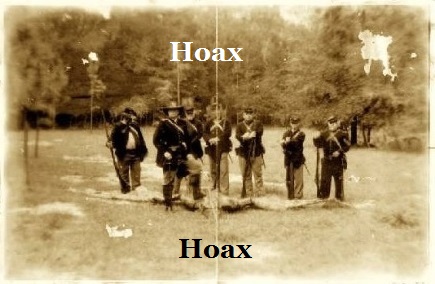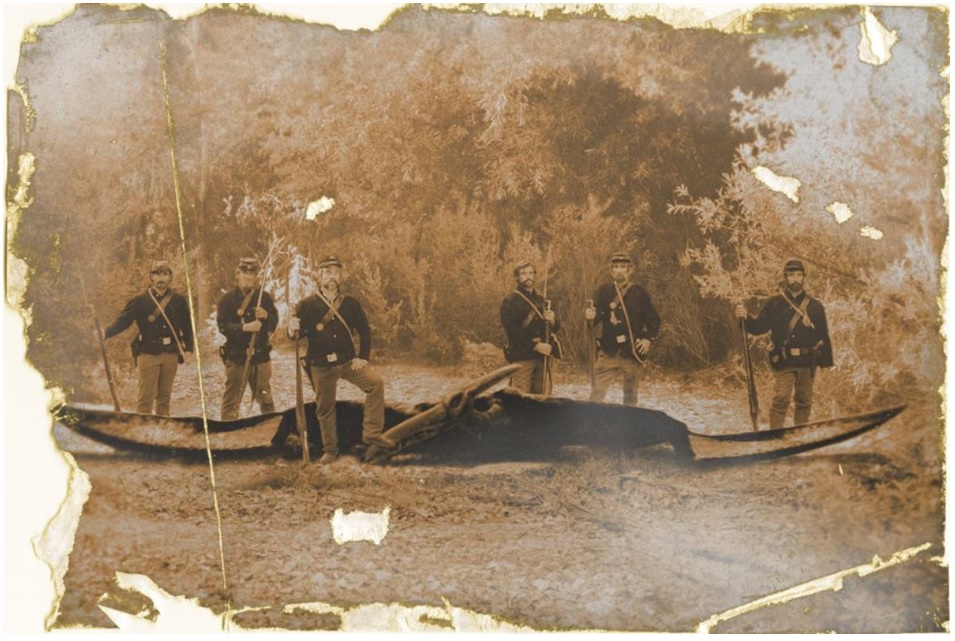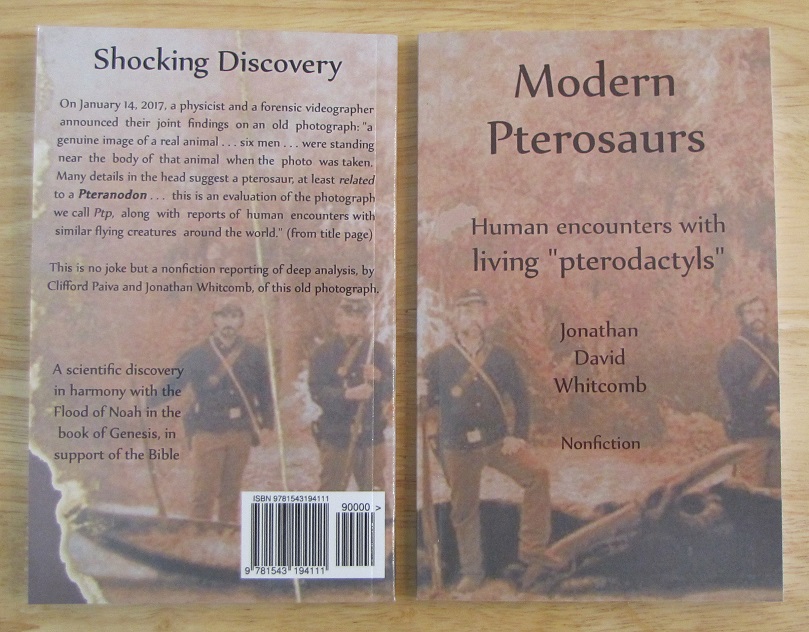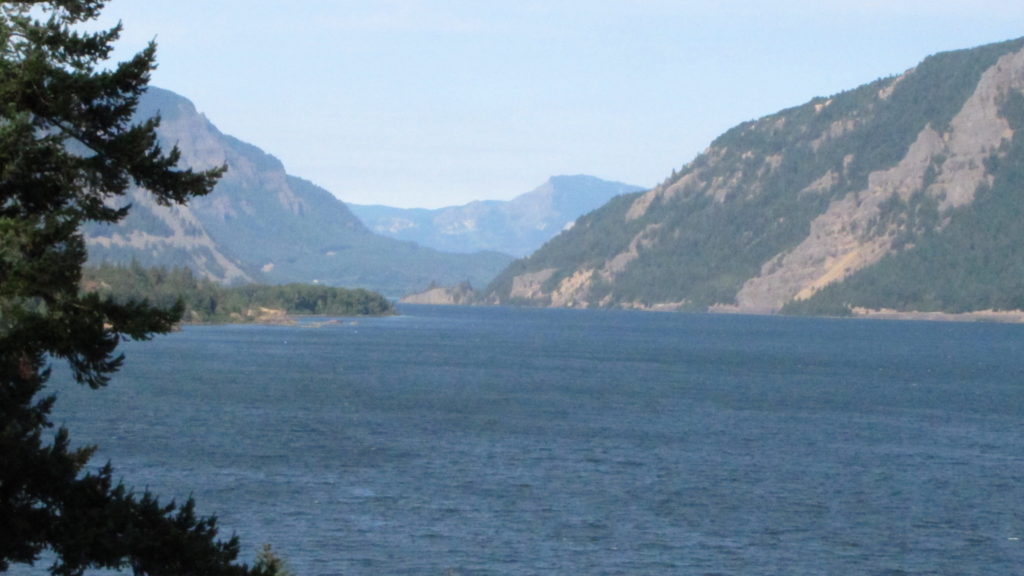By modern-pterosaur expert Jonathan David Whitcomb
Update on November 6, 2018: IMPORTANT
I have withdrawn my support for the Ptp photograph. It now seems obvious that one of the wings in that image is very close to what is seen on an animated pterosaur in one of the episodes of Walking with Dinosaurs.
I will let the origin post (below) stand as it is, for readers to learn whatever they can about how I may have fallen into such a big blunder. I now take full responsibility for my original decision to support this image before learning about its provenance.
I have ordered the halting of printing for one of my books, Modern Pterosaurs, because much of the content was about the Ptp image. Other books I still recommend for readers, however, for I still support the many eyewitness testimonies that are in those other publications.
Official Announcement of a Joint Declaration
On Saturday, January 14, 2017, the missile defense physicist Clifford Paiva and I communicated by phone and mutually agreed that the image herein labeled “Pteranodon Photograph” contains a genuine image of a modern pterosaur, regardless of the specific species or type of pterosaur that it may have been. This photo is not to be confused with the hoax-image said to have been created by an American film and television production company named “Haxan” (possibly a “Freaky Links” episode for Fox TV in 2001). The Haxan-photograph is indeed a hoax, probably influenced in its fabrication by the earlier photo that is now declared authentic.
Figure 1, below, is now offered as evidence for modern pterosaurs.
Genuine Image Called “Pteranodon Photograph”
Figure 1: photograph declared genuine by Paiva and Whitcomb (click on it for full size)
.
Contrast the above image with the one that is known to be a hoax, below:

Figure 2: Haxan hoax-photo, probably made in imitation of the other one
.
The Problem of Confusing the Two Photos
One of the problems I have seen in online discussions is this: People confuse the above two images. They are completely different pictures, although careless glances or poor memory can make people assume only one photograph is involved. Let’s look at one example:
One person on an online discussion group said that he (or she) showed “this picture” to his (or her) father, who is apparently a photography expert. The result was laughter and then the following review:
- The soldiers are all older and somewhat overweight, they’re most likely re-enactors
- Photographic prints did not have borders on them during the civil war. The damage
should go all the way to the edges
So what’s the problem with that criticism? The top of the discussion page gives a link to the image that is now labeled the “Pteranodon Photograph.” Yet a little further down is a comment that includes links related to the Haxan hoax. For a long time, the discussion appears to go on without hardly any person being aware: Two completely different photos are being discussed. The two criticisms mentioned, about soldiers being overweight and the print borders, apply to the hoax photo much better than to the “Pteranodon Photograph.” In fact, I see little doubt: The photography expert saw the Haxan photo, NOT the genuine one.
Declaration of Universal Pterosaur Extinction
We’ll call this “DUPE.” It’s not only assuming that all species of pterosaurs must have become extinct long ago; it’s declaring that idea as if it were a fact. The person who declares that all of them must have died out millions of years ago—that person then becomes part of the force that indoctrinates others into believing it. Here’s one example:
“. . . since they [dinosaurs] have not been seen in the past 65 million year or so, we are skeptical.”
Strange to tell, but for many years skeptics have criticized the living-pterosaur investigations, ridiculing me and my associates for not having any photographic evidence for extant pterosaurs, yet many skeptics have dismissed the Civil War photograph, mostly because the image obviously has, clearly in the middle, an apparent pterosaur.
Credit to Clifford Paiva
It has taken me (Jonathan Whitcomb) a number of years to come to the firm conclusion that the “Pteranodon Photograph” has a genuine image of a modern pterosaur. Yet this missile defense physicist has been declaring this case for years. Thank you, Cliff, for your wonderful work in this investigation. I hope that all of my friends can always be so patient with me and that I will be quicker to know the truth in the future and will not always require so much patience from others. We are indebted to Clifford Paiva.
.

Please be aware that Jonathan Whitcomb no longer supports this image
###
Copyright 2017 and 2018 Jonathan Whitcomb (“Old Photo of a Pterosaur Declared Genuine”)
.
Civil War pterosaur photograph
Let’s begin with what we know, practically for sure. The following image is from a television production, a staged performance that has been said to be an imitation of another, possibly much older, photograph.
.
Why Pterosaur Extinction may be Wrong
. . . Ropen lights (or indava lights) are not caused by fire, airplane lights, or meteors.”Analysis, by the physicist Clifford Paiva, regarding Paul Nation’s video footage . . .
.
Clifford Paiva Investigates Modern Pterosaurs
Many images from the research by this missile defense physicist—wonderful evidence!
.
Please join us: Investigate reports of modern living pterosaurs.
.
Modern Pterosaurs – verified by two scientists to have a genuine image of a real animal
From the final chapter of the book:
Making a simple hoax . . . needs no insertion of any soldier onto the background. Critics of Ptp, however, appear to be completely ignorant of that fact. They seem to assume that anything that gives any feeling of soldier-insertion destroys all confidence in the possibility that the animal is real. Nonsense!
.








